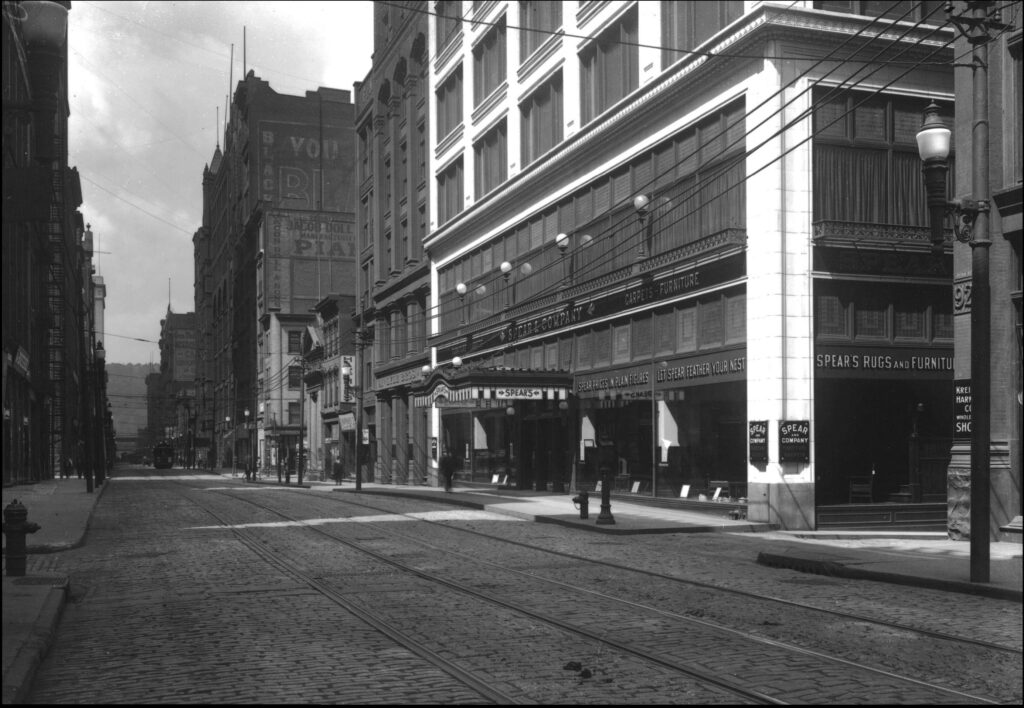
Built as a bank and still operating as a bank, this is a little building that gets the message right. It did not have the budget for stone, but the blond Kittanning brick gives it the color of stone, and the simple classical arches convey the impression of a rich and substantial bank where your money will be safe.
Note how the definition of “South Hills” has changed since this bank was built on Shiloh Street, just a block back from Grandview Avenue.


Comments

































